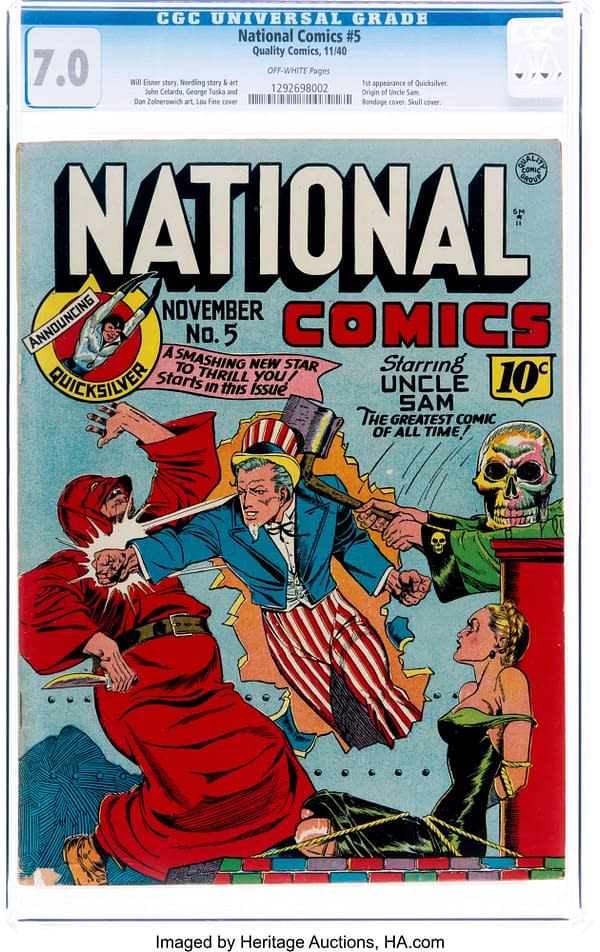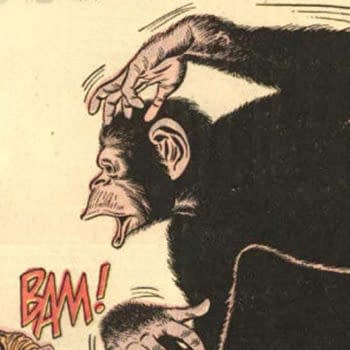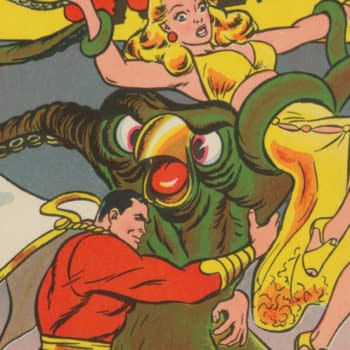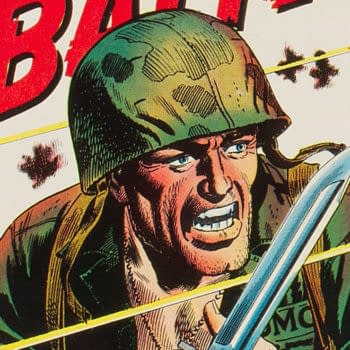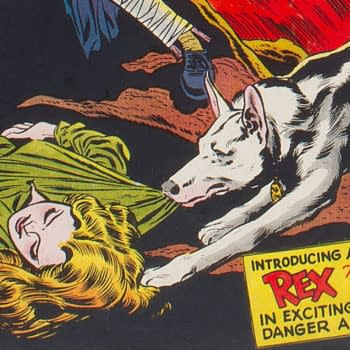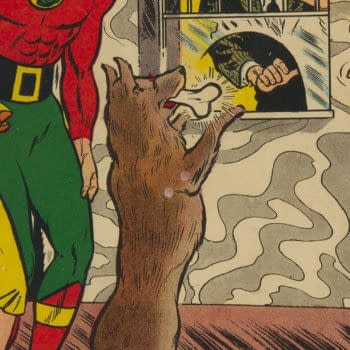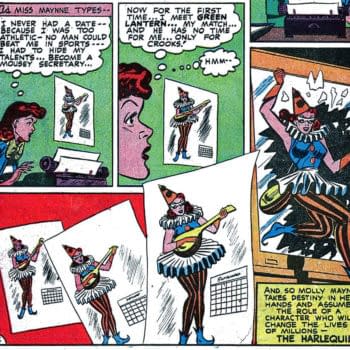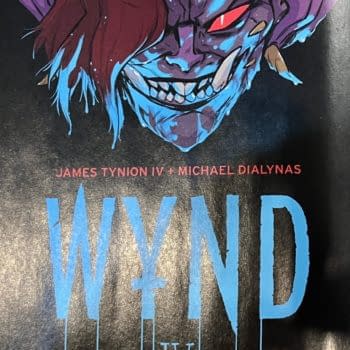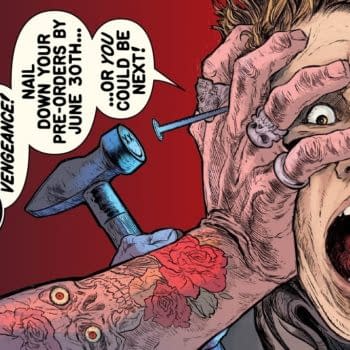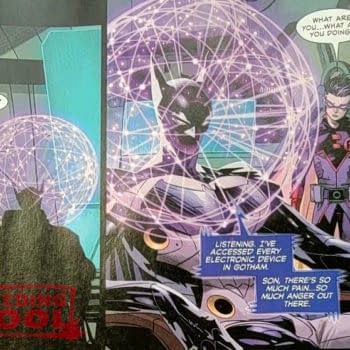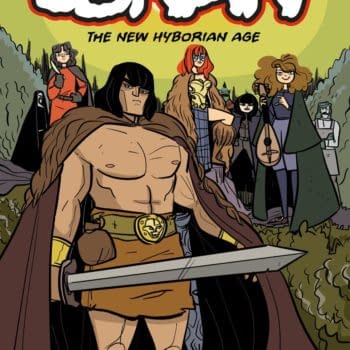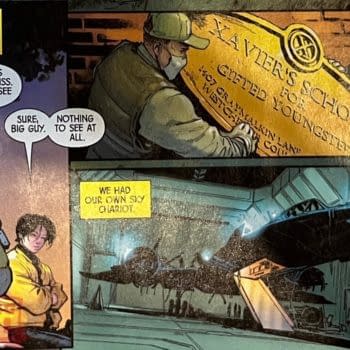Posted in: Comics, Heritage Sponsored, Vintage Paper | Tagged: Jack Cole, Max Mercury, National Comics, quality comics
Debut of Max Mercury (Quicksilver) in National Comics #5, at Auction
National Comics #5 features an expanded origin for the Quality Comics version of Uncle Sam, plus the debut of speedster Max Mercury.
National Comics #5 is known for its stand-out Lou Fine cover and for its interior story featuring the expanded origin of the Quality Comics version of Uncle Sam. In addition to work by Fine and Will Eisner, the issue features Golden Age greats like Blue Beetle creator Charles Nicholas Wojtkoski, Toni Blum, George Tuska, Dan Zolnerowich, and others. It also debuts the acrobatic speedster character Quicksilver by Chuck Mazoujian and Jack Cole of Plastic Man fame. This Golden Age Quicksilver would be renamed Max Mercury at DC Comics over 50 years later, and become an important part of the DC Comics speedster pantheon. There's a copy of his first appearance and origin in National Comics #5 (Quality, 1940) CGC FN/VF 7.0 Off-white pages up for auction in the 2023 June 22 – 25 Comics & Comic Art Signature® Auction #7340 at Heritage Auctions.
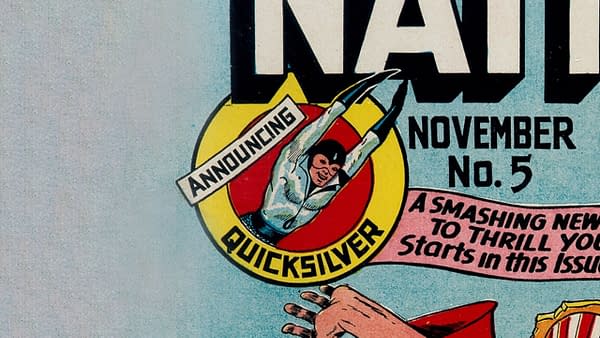
The Uncle Sam story in this issue expands significantly on the origin briefly described for this version of the icon as explained when he was introduced in National Comics #1. In 1777, a wagon train of supplies headed toward Valley Forge was closely pursued by Hessian soldiers. With the crucial supplies meant for General Washington's army, a man named Sam volunteered to act as a decoy to draw the Hessians off the trail while the supplies made it through. Sam was killed in the process, and in dying, a spiritual embodiment of America appears before him, and tells him that as a combined entity, they will guide the country through any future crisis that may come up.
Eisner displays an underappreciated grasp of both American history and contemporary politics in his Uncle Sam stories. In making Hessian soldiers the villains of the origin part of this story, he's clearly drawing a connection to the Germany of the early WWII era. The "Hessians" of the Revolutionary War era were the roughly 30,000 German soldiers hired by the British to fight in America. They came mainly from the German state of Hesse-Cassel.
The story soon shifts to Uncle Sam being called to action in more modern times. In National Comics #1, Uncle Sam had taken on the "Purple Shirts", based on an American fascist organization of that era, the Silver Shirts, or Silver Legion of America, a fascist organization established in 1933 and modeled after Adolf Hitler's Nazi movement, with the Silver Shirts' uniform similar to the Nazi's brown shirts. In National Comics #5, Uncle Sam showed up to stop the terrorist efforts of the Black Legion in a midwestern farming community. The Black Legion had been an offshoot of the KKK that began around 1925 and spread through the midwest during the 1930s. Responsible for an increasing number of murders, bombings, and other violent terror by the mid-1930s, the Black Legion became the subject of national headlines after Wayne County, MI prosecutor Duncan McCrea, investigating Black Legion-related murders in Michigan in 1936, told the Associated Press that the group was "rapidly building strength for a coup to establish a Fascist dictatorship." In a stunning turn of events, it was later found that McCrea had likely been a Black Legion member himself at one time. Eisner's story here in National Comics #5 may in part be inspired by a Black Legion plot to put Typhoid germs in milk.
The National Comics Debut of Speed Force User Max Mercury
The debut of the Golden Age speedster character Quicksilver is the other stand-out story of National Comics #5. Created by Jack Cole and Chuck Mazoujian, the character is perhaps the third significant speed-based character to debut in the Golden Age, after the Flash and Silver Streak. Quicksilver debuted without explanation for his powers in this issue, and never had an origin or an alter ego during his time at Quality Comics. He did briefly gain a sidekick and a base of operations in the middle of his National Comics run, though these elements were quickly dropped. Quicksilver's speed powers were a little more acrobatic in nature than those of the Flash, and seemingly included brief bursts of being able to take flight. Silver Streak and DC Comics' Johnny Quick were handled in a similar way.
Much of the Quality Comics IP was sold to DC Comics in late 1956 after Quality Comics ceased operations, and Quicksilver was among the characters that DC Comics acquired in the transaction. Despite the fact that Marvel had subsequently introduced a Mutant speedster of the same name in X-Men #4 in 1964, Quicksilver made his DC Comics debut in 1972 in Flash #214, a 100-page giant which reprinted a Quicksilver story from National Comics #67. Quicksilver appeared to be firmly established in the DC Comics universe with his next appearance, a Who's Who: The Definitive Directory of the DC Universe entry in 1986. This was soon followed by a pair of appearances in Young All-Stars, and a cameo in the memorable Animal Man #25.
After a handful of appearances at DC Comics as Quicksilver, the character was revived with the name Max Mercury for a storyline by Mark Waid and Greg Larocque that began in Flash #76 in 1993. Max Mercury was established as sort of an elder statesman of DC Comics speedsters, giving him a background that reached back into American history as well as DC Comics history. The character has remained an underappreciated but important part of the DC Comics speedster mythos to this day, having most recently appeared in the finale of the CW's popular The Flash series.
With a typically spectacular Lou Fine cover, an outstanding Uncle Sam origin story by Fine and Eisner, and the debut of a character who has become an important part of the Flash pantheon, there's a copy of his first appearance and origin of Max Mercury in National Comics #5 (Quality, 1940) CGC FN/VF 7.0 Off-white pages up for auction in the 2023 June 22 – 25 Comics & Comic Art Signature® Auction #7340 at Heritage Auctions.
